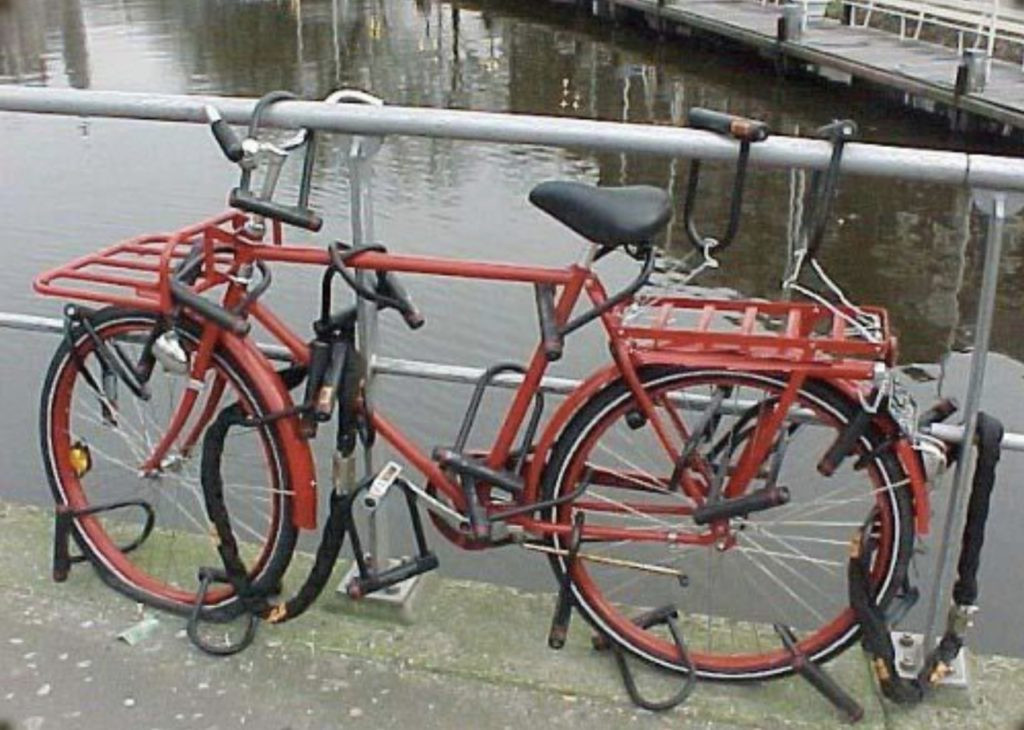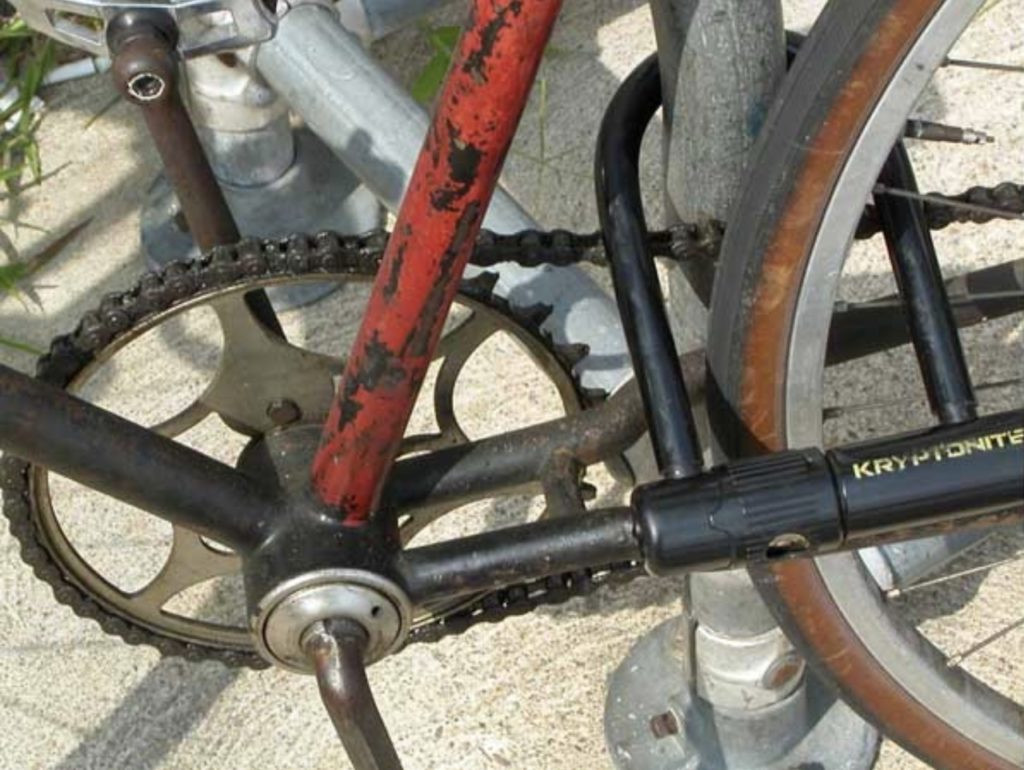Bike theft is a pervasive issue for cyclists worldwide. It’s a frustrating experience to return to where you locked your bicycle only to find it missing. Many cyclists, at some point, have likely relied on a flimsy lock, perhaps a thin chain or cable, only to realize its inadequacy after the fact. Understanding the vulnerabilities of different types of bike locks and mastering proper locking techniques are crucial steps in protecting your bicycle from theft.
This guide delves into the world of bike security, offering insights and practical advice to help you choose the right bike lock and employ effective locking strategies. While no lock is entirely theft-proof, the goal is to make your bike a less appealing target for thieves by increasing the time and effort required to steal it. By understanding how bike thieves operate and adopting preventative measures, you can significantly reduce the risk of becoming a victim of bike theft.
Understanding the Bike Thief Mindset
To effectively protect your bike, it’s helpful to understand the mindset and tactics of bike thieves. Most bike thefts are crimes of opportunity. Thieves often target bikes that are unlocked, poorly locked, or secured with inadequate locks. They seek easy targets that require minimal time and effort to steal.
Bike theft can be carried out by individuals or organized teams. Team operations often involve a scout identifying vulnerable bikes, a lock breaker equipped with tools, and a final member who takes possession of the unlocked bike. This division of labor minimizes risk and suspicion for each individual involved.
Whether working alone or in a group, the thief’s primary objective is a quick, low-risk theft. Therefore, effective bike locking is about making your bike a less attractive target compared to others. It’s about deterring the opportunistic thief, not necessarily defeating a determined professional.
Choosing the Right Bike Lock: Types and Recommendations
Selecting the right bike lock is the first line of defense against theft. There are several types of bike locks available, each with varying levels of security. However, for serious bike security, your options should be narrowed down to two primary types: U-locks and heavy-duty chain locks.
U-locks (or D-locks): Renowned for their robust security, U-locks are a top choice for cyclists seeking reliable protection. They consist of a hardened steel shackle in a “U” shape that secures to a crossbar. The smaller the U-lock, the less space there is for thieves to leverage tools to break it open. Look for U-locks from reputable brands known for their quality and security ratings.
Heavy-Duty Chain Locks: These locks offer a high level of security and flexibility. They are made of hardened steel links and typically come with a robust padlock. Chain locks are heavier than U-locks but offer more versatility in locking to various objects, especially larger or awkwardly shaped racks. Similar to U-locks, choose heavy-duty chain locks from established brands.
Locks to Avoid:
- Cable Locks: Thin cable locks are easily defeated with simple tools like wire cutters in seconds. They offer minimal security and are not recommended for deterring serious theft. While heavier gauge cables exist, they still generally offer less security than U-locks or heavy chains for the weight and price.
- Light-Duty Chain Locks: Similar to cable locks, light-duty chains are also vulnerable to cutting and offer inadequate protection in areas with a risk of bike theft.
Considering a Combination of Locks:
For high-risk areas or particularly valuable bikes, consider using a combination of a U-lock and a heavy-duty chain lock. This dual-lock approach significantly increases security and discourages thieves by presenting a more challenging and time-consuming target. Some cyclists also use a heavy-duty cable in conjunction with a U-lock to secure wheels and accessories.
 red bike attached to a metal railing with multiple bike locks
red bike attached to a metal railing with multiple bike locks
Mastering Proper Bike Locking Technique
Even the best bike lock is ineffective if used improperly. Correct locking technique is as important as the lock itself. Here are key principles for securing your bike effectively:
1. Lock to a Secure and Immovable Object:
- Solid Structures: Always lock your bike to a sturdy, fixed object that cannot be easily cut, broken, or moved. Ideal options include metal bike racks securely anchored to the ground, robust metal poles embedded in concrete, or designated bike parking structures.
- Avoid Vulnerable Objects: Never lock your bike to wooden fences, small trees, flimsy railings, or anything that can be easily cut or broken. Be wary of “sucker poles” or racks that thieves may have tampered with to facilitate theft. Always check if the object you are locking to is truly secure and not easily dismantled.
2. Lock the Frame and Rear Wheel:
- The Rear Triangle Method: The most secure method, often recommended by experts like the late Sheldon Brown, involves using a U-lock to secure the rear wheel and the frame (specifically the rear triangle) together to the secure object. This method maximizes security while using a smaller, stronger U-lock. Ensure the U-lock is positioned inside the rear triangle; otherwise, the wheel can be removed, leaving the lock behind.
 U-lock securing the rear wheel and frame within the rear triangle of a bicycle
U-lock securing the rear wheel and frame within the rear triangle of a bicycle
- Seat Tube Method: An alternative secure method is locking through the seat tube and the rear wheel to the secure object. This also effectively secures the frame and rear wheel.
- Avoid Locking Only the Front Wheel: Locking only the front wheel is a common mistake, as thieves can easily remove the front wheel and take the rest of the bike.
 a lone front wheel of a bike locked to a bike rack
a lone front wheel of a bike locked to a bike rack
- Avoid Locking the Frame Only: Locking only the frame leaves both wheels vulnerable to theft, especially if they have quick-release skewers.
 bike frame only locked to a metal pole, with both wheels stolen
bike frame only locked to a metal pole, with both wheels stolen
3. Minimize Space Within the Lock:
- Smaller U-lock Size: Choose a U-lock size that minimizes the empty space within the shackle when locked. Less space makes it harder for thieves to insert tools like levers or jacks to force the lock open. A snug fit is more secure.
4. Consider Securing Wheels and Components:
- Cable for Wheels: Use a heavy-duty cable to loop through both wheels and secure it with your U-lock or a separate padlock. This provides an additional layer of security for your wheels.
- Locking Skewers and Bolts: For enhanced security, especially for valuable bikes or in high-theft areas, consider using locking skewers (like Pitlock or Pinhead) for your wheels and seatpost. These replace quick-release levers and standard bolts with keyed versions, making it significantly harder to steal these components.
 Pitlock bike locking skewers
Pitlock bike locking skewers
5. Lock Placement and Orientation:
- Keep Lock Off the Ground: Avoid placing your lock directly on the ground. This prevents thieves from using the ground as leverage for bolt cutters or as an anvil for hammering attacks.
- Keyhole Downward: Position the lock’s keyhole facing downwards. This makes it harder for thieves to pick or tamper with the lock mechanism and provides some protection from weather elements.
Location and Time: Important Factors in Bike Security
Beyond locks and techniques, location and duration of parking play significant roles in bike theft risk:
1. Choose Well-Lit and Populated Locations:
- Visibility: Lock your bike in busy, well-lit areas with pedestrian traffic. Thieves are less likely to operate in highly visible locations due to the increased risk of being seen or interrupted.
- Avoid Isolated Areas: Minimize locking your bike in secluded or deserted areas, especially at night.
2. Minimize Locking Time:
- Short-Term Parking: The longer your bike is locked in a public place, the greater the risk of theft. Whenever possible, minimize the time your bike is left unattended.
- Avoid Overnight Parking Outdoors: Never leave your bike locked outside overnight, especially in urban areas. If possible, store your bike indoors at home, work, or in a secure bike storage facility.
Additional Bike Security Tips
- Bike Registration and Documentation: Register your bike with a national bike registry and keep a record of your bike’s serial number, make, model, and photos. This information is crucial for police recovery in case of theft and for proving ownership.
- Bike Insurance: Consider insuring your bike, especially if it is valuable. Bike insurance can provide financial protection in case of theft or damage.
- Remove Accessories: Always remove easily detachable accessories like lights, computers, bags, and pumps when locking your bike. Thieves often target these items.
- Secure Bolt-On Components: For added security, consider using locking solutions like Hexlox to secure bolt-on components such as handlebars, stems, and seats. These devices replace standard bolts with keyed magnetic locks, making it harder to remove components.
 Hexlox keyed magnets plugging Allen bolt recesses on a bicycle
Hexlox keyed magnets plugging Allen bolt recesses on a bicycle
Final Thoughts: Deterrence, Not Invincibility
Remember, no bike lock is truly unbreakable. The goal of bike security is not to create an impenetrable fortress, but to make your bike a less attractive target for thieves. By using high-quality locks, employing proper locking techniques, and being mindful of location and time, you can significantly reduce the risk of bike theft and protect your valuable ride. It’s about making the thief decide to move on to an easier target – someone else’s bike.
While it’s unfortunate that bike theft is a reality, taking proactive steps to secure your bike is a responsible and necessary part of cycling. Investing in good security measures and practicing diligent locking habits are essential for peace of mind and ensuring your bike remains yours to enjoy.
Disclaimer: The bike locking techniques discussed in this article are for informational purposes only. usabikers.net makes no guarantees regarding the effectiveness of any specific lock or technique in preventing bike theft.
For Further Reading:
- About Bike Theft: https://www.bicyclelaw.com/bicycle-safety/about-bike-theft/
- Bike Insurance Advice: https://www.bicyclelaw.com/legal-issues-for-cyclists/about-insurance/
- How to Lock Your Bike: https://thebestbikelock.com/how-to-lock-your-bike/

